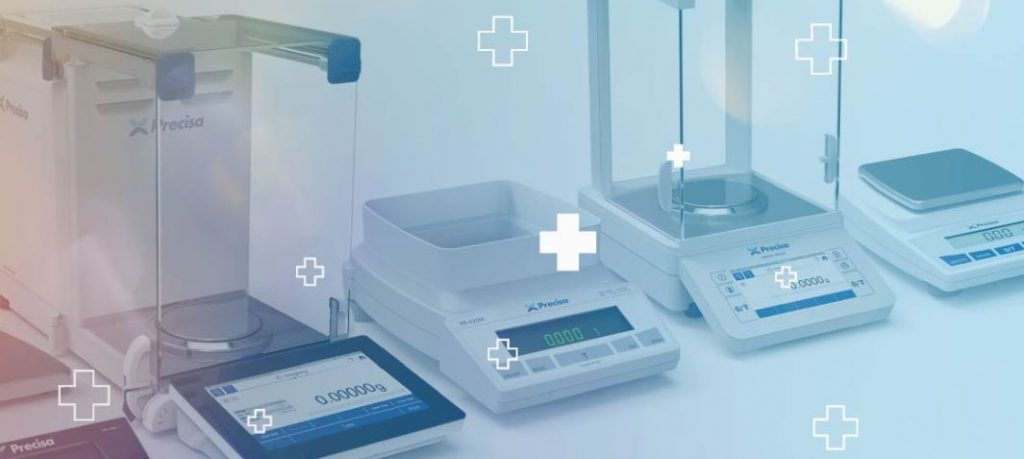Struggling to find the Right Weighing Scales and Balances for your Business?
Are you tired of struggling to find the perfect weighing balance and scales for your business? Weighing balances and scales are essential measuring instruments used to determine the weight or mass of an object. This article will not only identify the main types of weighing balances, but also give you a glimpse into their uses.
Metric units such as gram (g) and kilogram (kg) are commonly used to measure weight, whereas imperial measurements such as pounds (lbs) and ounces (oz) are frequently used in the UK.
At Precisa, the modern weighing balance, is an extremely high-tech device, providing precise measurements of up to the nearest 0.0001g. With built-in touch screens and internet connectivity, it’s the most efficient, accurate and reliable device yet. However, it wasn’t always like this. Learn about the history of the weighing balance and how it has changed over time in this insightful article from Precisa.
Weighing Balances vs Weighing Scales – What’s The Difference?
Do you know the difference between weighing balances and scales? Although these terms are used interchangeably, they technically measure different things.
Weighing balances measure mass, which is the amount of matter in something. A weighing balance measures mass directly by comparing the unknown mass to a known mass, which is not affected by changes in gravity. Therefore, a balance should give the same reading regardless of its location.
Weighing Scales, on the other hand, measure weight, which refers to the force acting on a mass that is equivalent to the object’s mass multiplied by acceleration due to gravity. The weight of any given object is dependent on local gravitational acceleration, which can vary by as much as 0.5%, changing with distance from the earth’s core, as well as latitudinally.
There can be confusion as some manufacturers refer to the same product as both a scale and a balance, but generally we hear about scales being used for larger masses and balances for smaller masses, although there can be some crossover.
Types of Weighing Balances and Scales
Depending on the application it is being used for, there is a wide range of different types of weighing scales and balances.
Equal Arm Balances
The equal arm scale is the oldest type of scale in existence, with its roots traced back to around 1878 BC in ancient Egypt. At its most basic level, the equal arm balance consists of two pans suspended on opposing sides of a lever.
In order to use it, the object being weighed must be placed on one of the pans. Calibration weights must then be placed on the other pan in an attempt to balance the two. Once the pans are perfectly balanced, the known weight will be equal to the unknown object.
Analytical Balances
Analytical balances are the most commonly used balances in laboratories, because they offer uncompromised sensitivity and precision. They are the most useful for weighing very small quantities because they can accurately measure mass in the sub-milligram range to a high degree of precision. Analytical Balances have a weighing capacity in the range of 100-500 g and a readability of 0.1 mg – 0.001 mg.
Analytical balances should only be used by trained personnel and have a draft shield or weighing chamber in the form of a transparent enclosure so that air currents and other environmental factors such as dust do not affect the measurements.
Analytical Balance Applications include:
- Sample Preparation
- Formulation
- Interval Weighing
- Routine Pipette Testing
- Differential Weighing
- Density Analysis
Discover Precisa’s range of Analytical Balances.
Micro Balances
For weighing the smallest amounts, micro balances should be used. At Precisa, our semi-micro balances offer a 0.01mg readability balance, 5 place balance or 0.00001g readability with capacities of up to 225g and internal calibration.
Typically, semi micro balances consist of two components, with one component containing the electronics and the other containing the measuring cell. This will limit the interaction and impact the electronics have on weighing the sample.
Microbalances have a range of applications including pipette calibration, analysis of pesticides, particulate matter (filter) weighing, weighing chemically sensitive samples, stent weighing, ashing or incineration, measurement of coatings, drying, and checking spillage quantities.
Discover Precisa’s range of Semi Micro Balances.
Top Loading and Precision Balances
A ‘top-loading balance’ or precision balance, is a balance that does not have a draft shield, where samples are loaded directly onto the weighing pan. Although they look similar, a precision balance has a lower readability than an analytical balance, as it typically measures to the nearest 0.1-0.01g, but tends to have a higher capacity.
Due to their high precision and advanced technology, precision balances are used in laboratories in order to efficiently perform tasks such as weighing test materials and sampling amounts, formulation, density determination, purity analysis, quality control testing and material and conformance testing. Balances with higher capacities are generally not used in laboratories but are used to test larger high-capacity weighing materials such as in construction sites.
Discover Precisa’s range of Precision balances.
Which Type of Weighing Balance of Scale Do I Need?
Now that you have learnt about the different types of weighing scale and balance, you will understand that choosing the right balance is not a simple task. There are a variety of different things that need to be considered for the most accurate weighing results. Therefore, we have created an article collating all the information you need to make an informed decision regarding which is the most suitable balance for your specific needs. Find out how to select the right balance for your laboratory.
The main questions that need to be considered when choosing a balance are:
- What is the heaviest and lightest sample that you will need to weigh?
- How many decimal places in grams do you require for the displayed weight?
- What size are the samples that you will be weighing?
- What features will you require – do you need to integrate the balance to another device such as a computer or printer? Do you require data storage?
Weighing Balances from Precisa
At Precisa, we specialise in analytical, precision and semi-micro weighing balances which are ideal for use across a wide range of industries and applications. We offer an extensive product range, with a variety of different capacities and sizes to meet almost every analytical weighing requirement.
You can view an overview of our product range here, which will help you to find the specific Precisa balance that is most suitable for your requirements.
Get in Touch
If you have found the many different types of weighing scale and balance overwhelming and would like guidance from our team, please do not hesitate to get in touch with us today. We look forward to being of assistance.
Or if you would like to stay in the loop regarding the latest products and news from Precisa, please take a moment to follow us on social media and sign up to our infrequent eNewsletter today..










